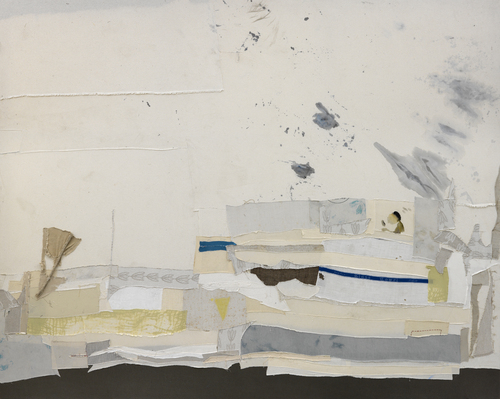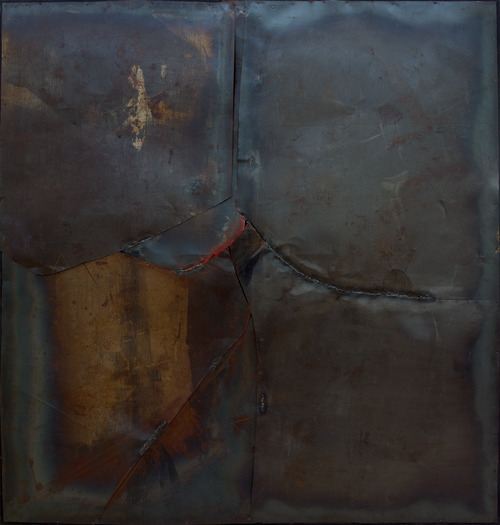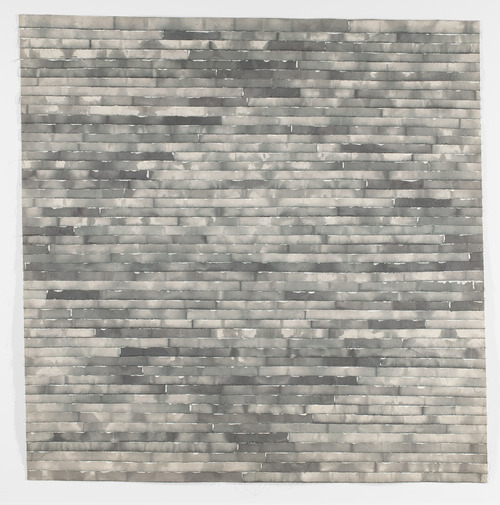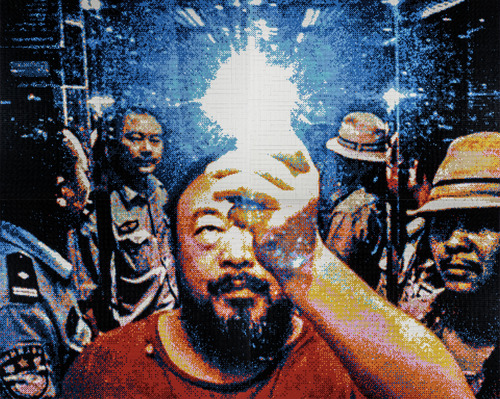Cosima von Bonin, Rockstars (Character Appropriation), 2003
Jodi Kovach
PhD student, Department of Art History & Archaeology, Washington University in St. Louis
Cosima von Bonin’s large-scale, two-and three-dimensional textile pieces exemplify how the artist chooses specific materials that engage a range of artistic discourses and political issues, all the while maintaining a visually appealing quality in her work. Her use of wool, cotton, and loden fabrics in Rockstars (Character Appropriation) recalls Blinky Palermo’s experiments with commercially produced textiles, which he had assistants piece together to make his two-dimensional “fabric paintings.” Von Bonin assembled the fabrics in her work by weaving and knitting—handcrafts traditionally associated with women. She appropriates this cultural stereotype in a context that reinterprets Palermo’s avant-garde strategy from a contemporary gendered perspective to challenge the limits of both avant-garde practice and conventional perceptions of feminine identity. By noting the Turkish manufacture of some of the fabrics, von Bonin points to Germany’s reliance on Turkish textile producers and exporters in the global market economy to evocatively question Germans’ xenophobic resentment toward the presence of Turkish immigrants. Furthermore, this piece incorporates American pop art approaches in its use of images drawn from popular culture, seen in the contoured faces of rock stars stitched onto a large circular shape resembling a compact disc. By exaggerating the size of these commodified images in a fabric piece, von Bonin recalls the soft sculpture of 1960s pop artist Claes Oldenburg, whose dramatic transformations of consumer products into fabric sculptures parodied materialist culture.
Von Bonin’s oversize fabric mushrooms, such as Therapy (#69) (2002, Carlos and Rosa de la Cruz Collection), and her whimsical foam-stuffed wool fence, Ohne Titel (Fence) (2000, Carlos and Rosa de la Cruz Collection), both of which were exhibited alongside Rockstars (Character Appropriation) in the spring 2007 exhibition Reality Bites: Making Avant-garde Art in Post-Wall Germany, likewise evoke the object-based aesthetic of the 1960s and revive Marcel Duchamp’s concept of the readymade as an everyday object that can be readily transformed into a work of art. She reclaims and reinvents these earlier avant-garde strategies in her puzzling and often humorous hand-sewn fabric sculptures and wall pieces as a way of confronting topical issues such as increasing commercialization, gender inequality, and cultural diversity in contemporary German society.
Bibliography
Avigkos, Jan. “Cosima von Bonin: Friedrich Petzel Gallery.” Artforum International 41 (Summer 2003): 184–85.
Dziewior, Yilmaz, ed. Cosima von Bonin: Bruder Poul sticht in See. Cologne: DuMont, 2001.
Eichler, Dominic. “It’s My Party.” Frieze, no. 54 (September–October 2000): 108–11.
Grosenick, Uta, ed. Women Artists in the Twentieth and Twenty-first Century. Cologne: Taschen, 2003.
Herring, Carina, Ralf Schauff, and Elisabeth Schuchardt, eds. Cosima von Bonin: The Cousins. Cologne: Walther König, 2000.
Krenz, Marcel. “On Mushrooms.” Art Review 53 (October 2002): 98–99.





